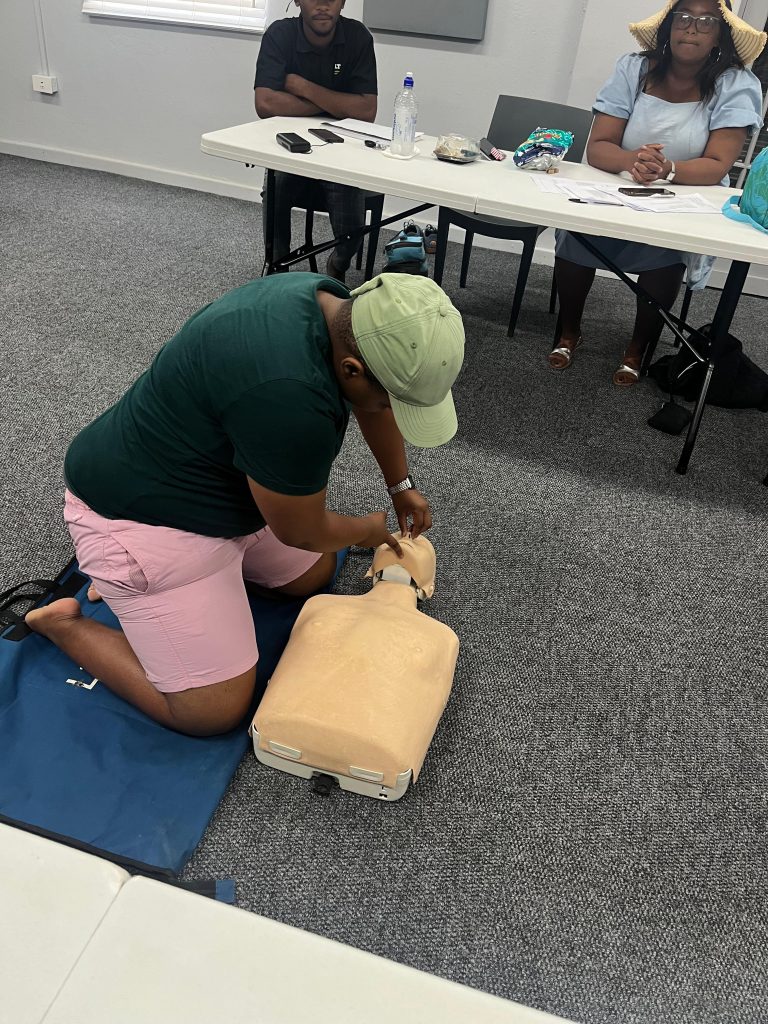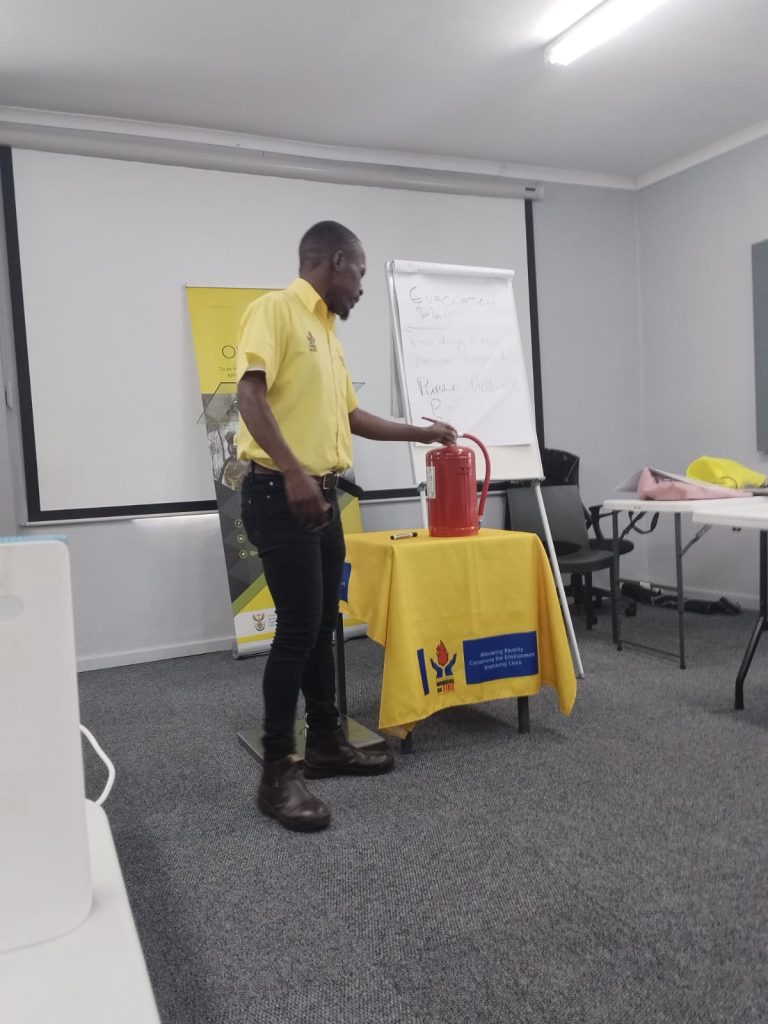
Health and safety refers to the policies, procedures, and regulations put in place to promote and protect the well-being of individuals in various environments, such as workplaces, public spaces, and homes. It encompasses measures aimed at preventing accidents, injuries, illnesses, and other hazards that could negatively impact a person's physical or mental health.
Health and safety encompass various categories, each critical for every workplace to vigilantly prioritize and be highly mindful of to ensure the safety of all employees and employers.
- Risk assessment
- Hazard prevention and control
- Training and education
- Emergency preparedness
- Regulatory compliance
- Health promotion
- Monitoring and evaluation
Our Health and Safety team underwent their beginner's First Aid training session on January 26, 2024. The training was conducted by Cameron Janjies, who at the time served as our Health and Safety Lead. While some members of the team were already familiar with the content due to prior certification in First Aid, for many others, this training represented a novel experience, as they had not previously undergone such a process.

Beginner first aid is all about learning the basics of helping someone who's hurt or in trouble. The most important things to remember are:
- Quick Action: You need to act fast to keep the person safe and help them as best you can.
- Remember ABCs: Check if they can breathe and if their heart is beating. If not, you may need to give CPR.
- Fix Wounds: Learn how to clean and cover cuts and scrapes to prevent infections.
- Know Emergencies: Understand signs of common problems like heart attacks or allergic reactions, so you know how to react.
- Call for Help: Don't hesitate to call 911 or get someone else to do it if the situation is serious.
- Stay Calm: Being calm and reassuring can make a big difference for the person who's hurt.
Beginner first aid involves learning basic skills to provide immediate assistance to injured or ill individuals. The key aspects include acting quickly, assessing breathing and circulation, treating wounds, recognizing common emergencies, calling for professional help when needed, and remaining calm and reassuring. While beginner first aid is valuable, it's essential to seek professional medical care for comprehensive treatment and evaluation.

On the 23rd, the team arranged for Mr. Joseph to deliver an introductory session on fire drills. The purpose was to educate the team on proper procedures to follow in the event of a fire emergency, including appropriate actions and protocols to ensure safety.

The occurrence of fire is often underestimated until it directly impacts our lives. However, during the session, we recognized the gaps in our knowledge regarding appropriate actions in such emergencies. Reflecting on past scenarios, I now understand that my initial instinct, such as jumping out of a window or attempting a rescue without proper training, could potentially lead to further harm.
We also came to recognize that fires can originate not only from external sources, such as community activities, but also within our own workplaces and homes. Hazards like tangled or exposed cables and the use of candles pose significant risks. Additionally, maintaining a well-organized and safe work environment is crucial, ensuring that windows can be easily closed in the event of a fire to help prevent its spread.

We extend our gratitude to Mr. Joseph for his willingness to conduct this informative session with us. We eagerly anticipate the practical implementation of the fire drill following this theoretical introduction. We trust that our Health and Safety team will persist in their efforts to educate us and maintain a consistently safe working environment.


Lovely Phumi and team!! You guys are taking your health and safety portfolio to another level. Well done